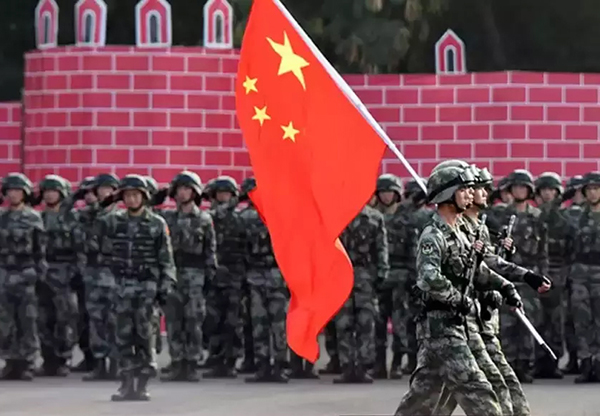The Chinese government has proposed the defence budget for the fiscal year 2022 at 1.45 trillion yuan ($230 billion), a 7.1 per cent year on year increase, state-run China Daily reported quoting the draft budget proposals presented by Premier Li Keqiang to the National People’s Congress (NPC), the country’s parliament on 5 March.
The hike is over three times that of India’s defence budget of 5.25 lakh crore (about $70 billion) for 2022.
Last year, China’s defence spending for the first time crossed $200 billion. In 2021, the defence budget grew by 6.8 per cent to $209 billion.
In his work report presented to China’s Parliament, Chinese Premier Li called for deepening comprehensive combat readiness from the People’s Liberation Army (PLA). He said the PLA needs to carry out military struggles in a resolute and flexible manner to defend the country’s sovereignty, security and development interests.
China’s increase in this year’s defence budget came amid the standoff at eastern Ladakh and its increasing political and military tensions with the US.
How to read China’s defence expenditure?
China’s 2019 defence whitepaper outlines three major categories of China’s defence spending: personnel expenses, capital expenses and training and sustainment expenses. The white paper highlights that since 2010, China’s capital expenditure has increased every year. In 2010, China’s capital expenditure was 33.2 per cent of the total budget, and it grew to 41.1 per cent of the total expenditure in 2017. Earlier, in the last two decades, China’s defence spending was roughly equal in all three categories. However, the rising trend, especially in this decade, aligns with Xi Jinping’s rise as the Chinese Communist Party (CCP) general secretary.
Interestingly, China’s 2015 defence white paper emphasised that the PLA should focus more on far seas operations to protect it overseas interests along with near sea defence. This would require a major investment in the Navy and Air Force, which are more capital intensive forces than the ground force. Furthermore, Xi’s armed forces reforms have also emphasised on newer weaponry to achieve ‘multi-domain integrated joint operations’. Thus, in this decade, the PLA’s defence expenditure is majorly utilised on commissioning more advanced and high-tech weapons to achieve regional supremacy and extra-regional operational capabilities.
What the defence expenditure hides?
But these are just conservative estimates that are published by China’s State Council and Ministry of Finance. Military observers across the world have questioned these numbers and claim that China hides more than it reveals. For instance, scholars from the Stockholm International Peace Research Institute (SIPRI), International Institute of Strategic Studies (IISS) and RAND Cooperation have all claimed that China’s defence expenditure is much higher than it showcases. Similarly, the US Department of Defense’s (DOD) annual China military power report doesn’t provide a specific assessment but has repeatedly claimed that China’s military spending could be much higher than projected.
This is because China’s military expenditure hides major categories of defence spending. For instance, China’s published numbers don’t account for People’s Armed Police and Coast Guard expenses (paramilitary forces), which could be significantly high in all probability. Similarly, it doesn’t account for newer but capital-intensive areas like China’s space and cyber programmes, nuclear programmes and defence mobilisation funds. It also doesn’t reveal the provincial military bases’ operating costs. Furthermore, China’s defence expenditure also excludes expenditure on disaster relief operations — which is later to be reimbursed through non-defence related agencies. Finally, China also doesn’t reveal the accurate cost of all its military goods and services, thus, increasing the inconsistencies and ambiguities about its defence spending.
However, China is not the only country to hide its defence expenditure, as India too doesn’t reveal several components like its defence spending on space, cyber and nuclear programmes.
Comparing China’s defence expenditure
The US DOD report projects a slowdown in China’s economic growth in the next 10 years, thus reducing its capabilities to spend on defence and national security needs. However, on comparing defence expenditures, it is clear that China is many folds ahead of its regional competitors, and it would take a significant jump for the regional actors, including India, to catch up with China.
For instance, China’s total defence expenditure for 2022 is more than the combined defence expenditures of India, Japan, Australia, South Korea, and Taiwan for 2021. However, China’s defence expenditure is around 3.5 times less than the US annual military budget, thus making the US an important extra-regional actor in the Indo-Pacific region for balancing China’s rise.


















